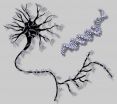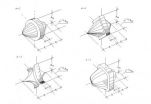(Press-News.org) Engaged workers—those who approach their work with energy, dedication, and focus—are more open to new information, more productive, and more willing to go the extra mile. Moreover, engaged workers take the initiative to change their work environments in order to stay engaged.
What do we know about the inner workings of work engagement, and how can employers enhance it to improve job performance? In a new article to be published in the August issue of Current Directions in Psychological Science , a journal of the Association for Psychological Science, Arnold B. Bakker creates a model of work engagement based on the best current research.
Work engagement depends on two kinds of resources, says Bakker, a psychologist at Erasmus University Rotterdam in the Netherlands. Job resources include social support, feedback, and opportunities for autonomy, variety, and growth. Such resources are good for the worker—they satisfy basic human needs—and good for the workplace, because when job resources are rich, work gets done more quickly and with better results. The process, moreover, is cyclical. Working better is more rewarding for the worker, which in turn increases her engagement and effectiveness.
Interestingly, engagement—and high-quality performance—is greatest when the demands of the job are highest. This principle applies even to what we think of as low-level jobs, such as those at a fast-food restaurant.
Employees' own personal resources—such as self-esteem and optimism—also contribute to work engagement. Not only do workers with abundant personal resources approach their jobs with more enthusiasm and joy; they also tend to be in better health, allowing them to focus and work hard. They tend as well to create more of all these goodies for themselves through "job-crafting," seeking ways to make their responsibilities "fit" their talents and interests and to increase challenge. Again, the process is an upward spiral. Job crafters gain admiration from other workers, thus transferring their attitudes to them. Those more productive attitudes increase the other workers' engagement and with it, their own productivity and personal reward.
Of course, says Bakker, work engagement differs from person to person, which helps account for the fact that some are leaders and others are followers. For each person, engagement also ebbs and flows from day to day, even hour to hour.
Indeed, no one should expect to feel, or be expected to exhibit, peak engagement every second of the workday. Sometimes work is tedious; employees need to be able to tolerate that. Nor should they be held to impossible standards. Down time, says Bakker, is not only a mark of sympathetic management. It helps renew workers, keeping them happy, productive—and engaged.
###
For more information about this study, please contact: Arnold B. Bakker at bakker@fsw.eur.nl.
Current Directions in Psychological Science, a journal of the Association for Psychological Science, publishes concise reviews on the latest advances in theory and research spanning all of scientific psychology and its applications. For a copy of "An evidence-based model of work engagement," please contact Divya Menon at 202-293-9300 or dmenon@psychologicalscience.org.
Work engagement, job satisfaction, and productivity -- they're a virtuous cycle
2011-07-22
ELSE PRESS RELEASES FROM THIS DATE:
Caltech researchers create the first artificial neural network out of DNA
2011-07-22
PASADENA, Calif.—Artificial intelligence has been the inspiration for countless books and movies, as well as the aspiration of countless scientists and engineers. Researchers at the California Institute of Technology (Caltech) have now taken a major step toward creating artificial intelligence—not in a robot or a silicon chip, but in a test tube. The researchers are the first to have made an artificial neural network out of DNA, creating a circuit of interacting molecules that can recall memories based on incomplete patterns, just as a brain can.
"The brain is incredible," ...
As new data wave begins, a gene study in one disease discovers mutations in an unrelated disease
2011-07-22
Often enough, in science as in life, unexpected knowledge has a personal impact. Researchers seeking rare gene variants in just a few individuals with attention-deficit hyperactivity disorder (ADHD) discovered that one patient had a novel combination of two mutations. Those mutations caused a different disease, unrelated to ADHD—a blood disorder called idiopathic hemolytic anemia.
Although the man had long contended with the blood disease, "idiopathic" meant that physicians were unable to determine the cause of his particular anemia—until now, say authors of a new study.
As ...
Animal model sheds light on rare genetic disorder, signaling pathway
2011-07-22
SALT LAKE CITY – A team of researchers from the University of Utah and Brigham Young University has developed a mouse model of focal dermal hypoplasia, a rare human birth defect that causes serious skin abnormalities and other medical problems. This animal model not only provides insight into studying the cause of focal dermal hypoplasia (FDH), but also offers a novel way to study a signaling pathway that is crucial for embryonic development.
The findings were published July 19, 2011, online in the Proceedings of the National Academy of Sciences.
FDH is an uncommon ...
Genetic map of African-Americans to aid study of diseases, human evolution
2011-07-22
JACKSON, Miss. – A group of researchers from the University of Oxford, Harvard Medical School and the University of Mississippi Medical Center has constructed the world's most detailed genetic map, a tool scientists can use to better understand the roots of disease and how DNA is passed generationally to create diversity in the human species.
About 5,000 Jackson-area volunteers were included in a group of nearly 30,000 African-Americans whose genetic information the scientists used to create the map.
The map pinpoints genome locations where people splice together DNA ...
URMC researchers exploring keys to melanoma progression
2011-07-22
Melanoma is devastating on many fronts: rates are rising dramatically among young people, it is deadly if not caught early, and from a biological standpoint, the disease tends to adapt to even the most modern therapies, known as VEGF inhibitors. University of Rochester researchers, however, made an important discovery about proteins that underlie and stimulate the disease, opening the door for a more targeted treatment in the future.
This month in the journal Cancer Research, Lei Xu, Ph.D., assistant professor of Biomedical Genetics at the University of Rochester Medical ...
TGen, Virginia G. Piper Cancer Center studying new breast cancer drug
2011-07-22
SCOTTSDALE, Ariz. — July 20, 2011 — A new drug targeting the PI3K gene in patients with advanced breast cancer shows promising results in an early phase I investigational study conducted at Virginia G. Piper Cancer at Scottsdale Healthcare, according to a presentation by oncologist Dr. Daniel D. Von Hoff at the 47th annual meeting of the American Society of Clinical Oncology (ASCO).
The drug under investigation, GDC-0941, manufactured by Genentech Inc., South San Francisco, Calif., targets the PI3K gene, which is abnormal in about 20-30 percent of patients with advanced ...
Fast prediction of axon behavior
2011-07-22
Researchers at Case Western Reserve University have developed a computer modeling method to accurately predict how a peripheral nerve axon responds to electrical stimuli, slashing the complex work from an inhibitory weeks-long process to just a few seconds.
The method, which enables efficient evaluation of a nerve's response to millions of electrode designs, is an integral step toward building more accurate and capable electrodes to stimulate nerves and thereby enable people with paralysis or amputated limbs better control of movement.
To increase the accuracy of the ...
U of M researchers discover gene required to maintain male sex throughout life
2011-07-22
MINNEAPOLIS / ST. PAUL (July 20, 2011) – University of Minnesota Medical School and College of Biological Sciences researchers have made a key discovery showing that male sex must be maintained throughout life.
The research team, led by Drs. David Zarkower and Vivian Bardwell of the U of M Department of Genetics, Cell Biology and Development, found that removing an important male development gene, called Dmrt1, causes male cells in mouse testis to become female cells.
The findings are published online today in Nature.
In mammals, sex chromosomes (XX in female, XY ...
Research outlines math framework that could help convert 'junk' energy into useful power
2011-07-22
BUFFALO, N.Y. -- A University at Buffalo-led research team has developed a mathematical framework that could one day form the basis of technologies that turn road vibrations, airport runway noise and other "junk" energy into useful power.
The concept all begins with a granular system comprising a chain of equal-sized particles -- spheres, for instance -- that touch one another.
In a paper in Physical Review E this June, UB theoretical physicist Surajit Sen and colleagues describe how altering the shape of grain-to-grain contact areas between the particles dramatically ...
Survey: Killing of bin Laden worsened Americans' views of US Muslims
2011-07-22
COLUMBUS, Ohio – Instead of calming fears, the death of Osama bin Laden actually led more Americans to feel threatened by Muslims living in the United States, according to a new nationwide survey.
In the weeks following the U.S. military campaign that killed bin Laden, the head of the terrorist organization Al Qaeda, American attitudes toward Muslim Americans took a significant negative shift, results showed.
Americans found Muslims living in the United States more threatening after bin Laden's death, positive perceptions of Muslims plummeted, and those surveyed were ...

